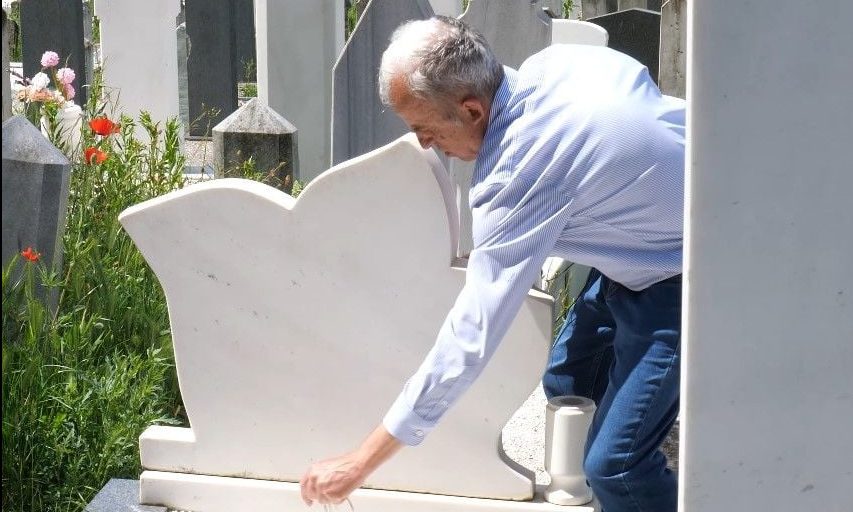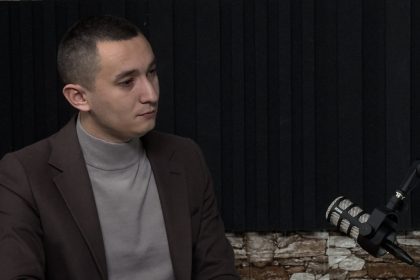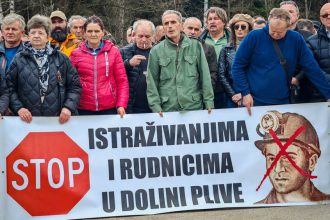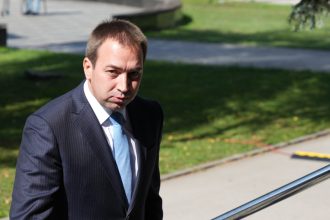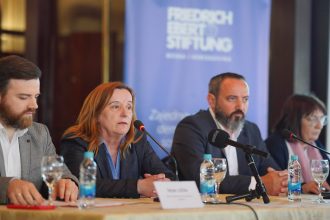The horrors of war are still living wounds for many citizens of Bosnia and Herzegovina, and there is no time that can erase memories or consequences. However, in our society, there is a considerable number of those who are almost not recognized at all and are systematically neglected – and we are talking about the parents and families of children who were killed in the war.
Hercegovina.info in cooperation with gerila.info brings a new story to raise awareness of the current situation of those who lost the most valuable thing they could lose in the last war. Our interlocutors are parents who lost their minor children in the most painful ways, and even thirty years after the suffering, they are having a hard time coping with the loss or in some cases, they don't even know where their children's bodies are.
“I was there at all my neighbors and I am convinced that every single one of them knows where the bodies are. They may not be able to show a square meter, but they can show a plot of 10 dunams (11,000 sq ft). Let them show me and I will dig up all 10 dunams”, Fikret Bačić told perhaps the cruelest fact of this series, because even after several decades he does not know where the bones of his wife and two children are.
“Shoot me”
“The worst was the day of my daughter's funeral. There was so much shelling, we stopped in the cemetery and I dispersed all the people so that no one would die. I stopped, raised my hands and knew they could see me; those were all my neighbors. If they're going to kill me, let them kill me, but let me bury my child,” Behram Skalonja from Konjic recalled the sad event 30 years ago.
The first civilian/child victim of the war was a boy of Croatian nationality, Aleksandar Macipura, who lost his life as a result of a mortar shell. He and two children hid behind a building, but even there he was not safe. The last victim of the war is Aida Jusufović, the daughter of our interlocutor Irfan. She was wounded on September 28th, 1995, and after 40 days, she succumbed to her injuries in the General Hospital in Konjic.
When the school bell stopped ringing in Konjic in 1992, it signalized an unhappy childhood for many children. Unfortunately, in addition to the cessation of children's shouting and games in the city on the Neretva, many young hearts that have not yet set foot in life also stopped beating. In Konjic alone, 16 children died, whose names are on the monument.
“She and her mother were on a workers’ bus returning from the vicinity of Konjic, and they wanted to avoid the shelling of the city. After the bus entered the street where we lived, a shell hit the building above the bus and all the shrapnel returned to the bus, which fell into the Trešanica river. My wife was wounded, but slightly. She saw that the late Aida was wounded and immobile, the driver as well. Wading upstream of the Trešanica river, his wife called for help. At that moment, people who lived nearby appeared and searched for help, and they were taken to the hospital. Doctors fought for Aida's life for 40 days,” says Irfan Jusufović in the documentary, who points out that little Aida was only 11.5 years old at the time.
Premature death
“Before dawn, around 3:30, she lost her fight for life. I came up there every morning in front of the hospital asking for information about how she spent the night, but that morning no one came out because they knew I was sitting outside. A friend passed by and asked me how Aida was doing, I said that I didn't know because no one came out to tell me how it’s been, as the custom was for all those 40 days. She entered the hospital, called a doctor on duty in the hall and said “Irfan, sit on that bench” and gave me her earrings. She died at half past three. My wife asked me how Aida is, I said she's gone”, he returned with a sad memory to the last days of Aida's life.
The most difficult category among war victims
“Those people are unnoticed all the time, we see that through the rights they have. Those who lost their children as soldiers have some appreciation. It's not like in the system where there were families of warriors, but they have some status, some respect, some privileges to go through the line at the counter, some disability benefits. These people, as parents of child civilian victims, have nothing, they have no resolved status rights and are invisible. In the public space, they rarely get the opportunity to be in the media, they are not organized into groups, they do not have associations like there are veterans’ associations that are financed by the government. They can rarely do something,” said Edin Ramulić, a journalist and human rights activist and one of the main initiators of the initiative ‘Because it concerns me’ and the celebration of the Day of White Ribbons in Prijedor.
She went to feed the kitty
“It was February 7th, 1994, I was stuck in Zenica for two months before that and I wasn't there for the whole of January and February, I came the day before the tragedy. My neighbors told me that a grenade fell, my daughter came in to feed the kitty, the grenade fell on the first floor. She went to the hospital and died within three hours. It's hard to say what that means, I'm not the only one because there are a lot worse cases than me, but life is like that”, says Behram Skalonja about the moment of his daughter's death, who also died in Konjic.
The Army of the Republic of Srpska came to the village of Zecovi near Prijedor for the first time on July 23rd, 1992 and took away all the adult men. 150 Bosniak civilians were killed, and torture, sexual abuse and other inhuman acts were committed against the civilians of this Prijedor village. The trial for these crimes began in 2015 and had its epilogue in 2023. In the Court of Bosnia and Herzegovina, the first-instance verdict was pronounced against eleven accused former members of the Republic of Srpska army. Five defendants were sentenced to 59 years in prison for crimes against humanity.
Most of the Prosecution's witnesses spoke about the murder of 32 women and children in the hamlet of Gradina, after which the bodies were moved to a mass grave and still have not been found. One of those who lost their loved ones on that fateful July 25th, 1992, was Fikret Bačić, whose wife and two children, a 12-year-old son and a six-year-old daughter, were taken away that day.
“The murder took place on July 7th, 1992, and I only found out about it at the beginning of September, because the telephone connections were cut. I used to be on the phone until 1 after midnight or 2 because I heard that someone from Zecovi and Čarakovo came out who knows me and my family, so I got the phone number. But no one would tell me. A total of 15 children and 14 women were killed, three children survived. 32 of them were taken out to be shot, all women and children…”, Bačić tells us.
Unlike Prijedor, in Konjic, a monument to children killed in the war was still erected. It has 16 names engraved on it, and is located near Second Elementary School.
“If we were to talk about what happened in Konjic, then we cannot erase the date of April 20th, when the school bell stopped ringing from this school. This is the symbolism and this monument to the civilian victims of the war near the second elementary school. The monument does not bear any national sign and on it are the names of children of all three nationalities, i.e., when it comes to children – there is only one nationality because children are innocent and not guilty of anything. If anyone is to blame for war conflicts, then it is us old people – each in his own way,” said Irfan Jusufović, today a member of the Association of Civilian Victims of War from the Konjic municipality.
“When the Assembly of Civilian Victims of War from Konjic made the decision to build a monument on my initiative, money started to be collected. After the war, no one had cash. I came to my friend's construction company and he told me to ask for material, not money. That's how it was, we made that monument so that future and current generations know how many children died in Konjic”, added Behram Skalonja.
Citizens submitted signatures for the construction of a monument to the murdered children of Prijedor to the Assembly in November 2014. Ten years later, the local authorities still refuse to face what happened in 1992. The bodies of a large part of the Prijedor victims have never been found. It is a secret that many have taken with them to the grave.
“No one paid attention to us victims, from the local community to the state. We are discriminated against and discrimination is being carried out more and more against the victims. From 2013 until today, we have not received a single letter from the city authorities, and I wrote 236 pages, asked, urged and all kinds of things… For us, the families, surviving members, it would be a satisfaction for them to have their own grave, to be able to go to the grave, to be able to pray there, to honor them like this monument to the murdered children of the city of Prijedor does”, emphasized Fikret Bačić, to whom the war took three of the dearest people in his life, and he added that he would ask the neighbors who will watch him that they can give him information in different ways about the bodies of his wife and children. “They may not know an exact square foot, but they know a plot or a field. They can do it in different ways so that it will never be known that they said it, and even if they say it to my face, no one will know that so and so said that to me”, he concluded.
Edin Ramulić, an activist for human rights, believes that the process is important for all monuments, and that most often the monument becomes part of an environment, and later the story about the victims subsides for a while and stops. He also believes that the monument should remain for generations to come as a sign that we want to leave a memory of the murdered children, but also that the state of our monuments is such that we should all be ashamed of the message we are leaving through these monuments to future generations.

